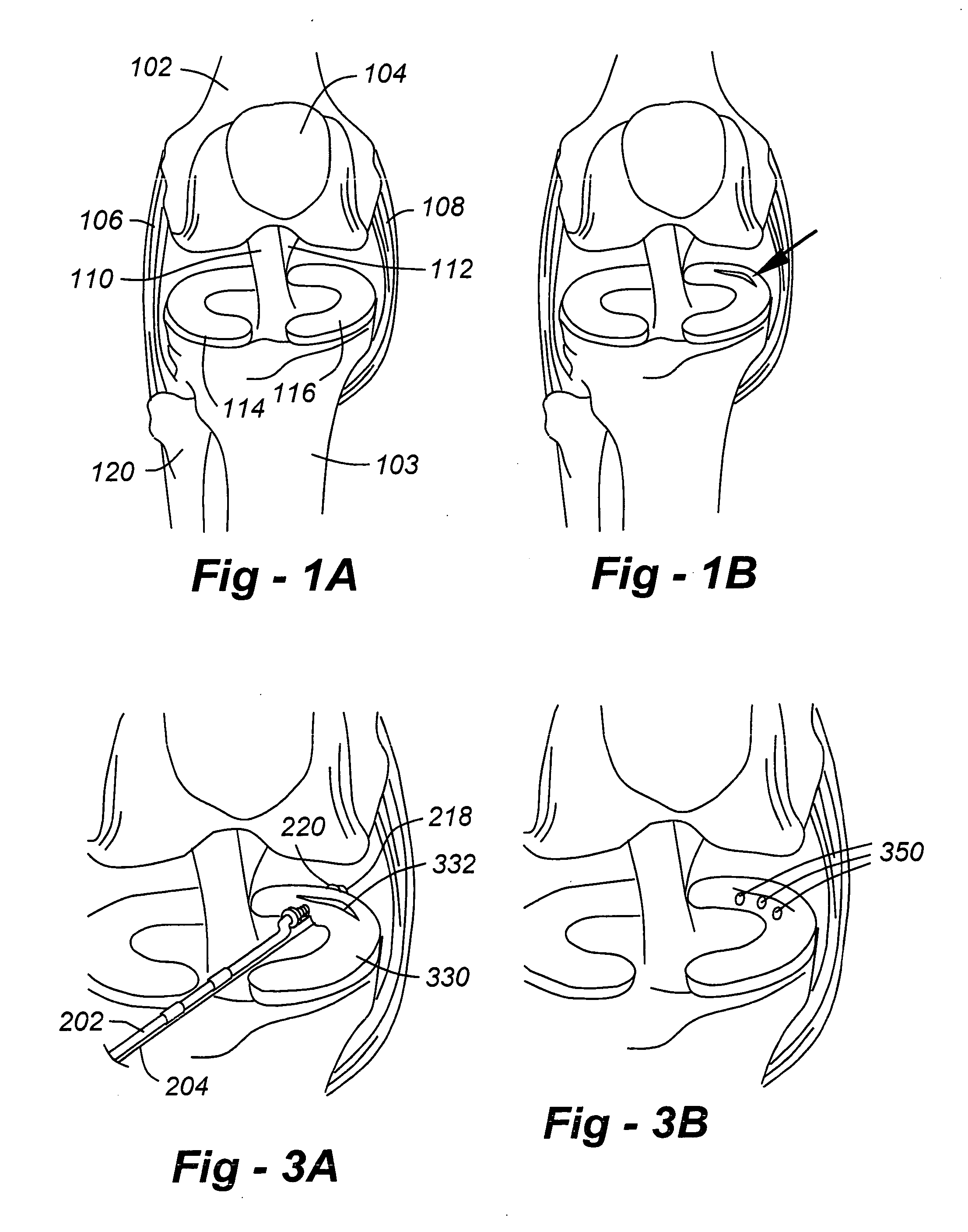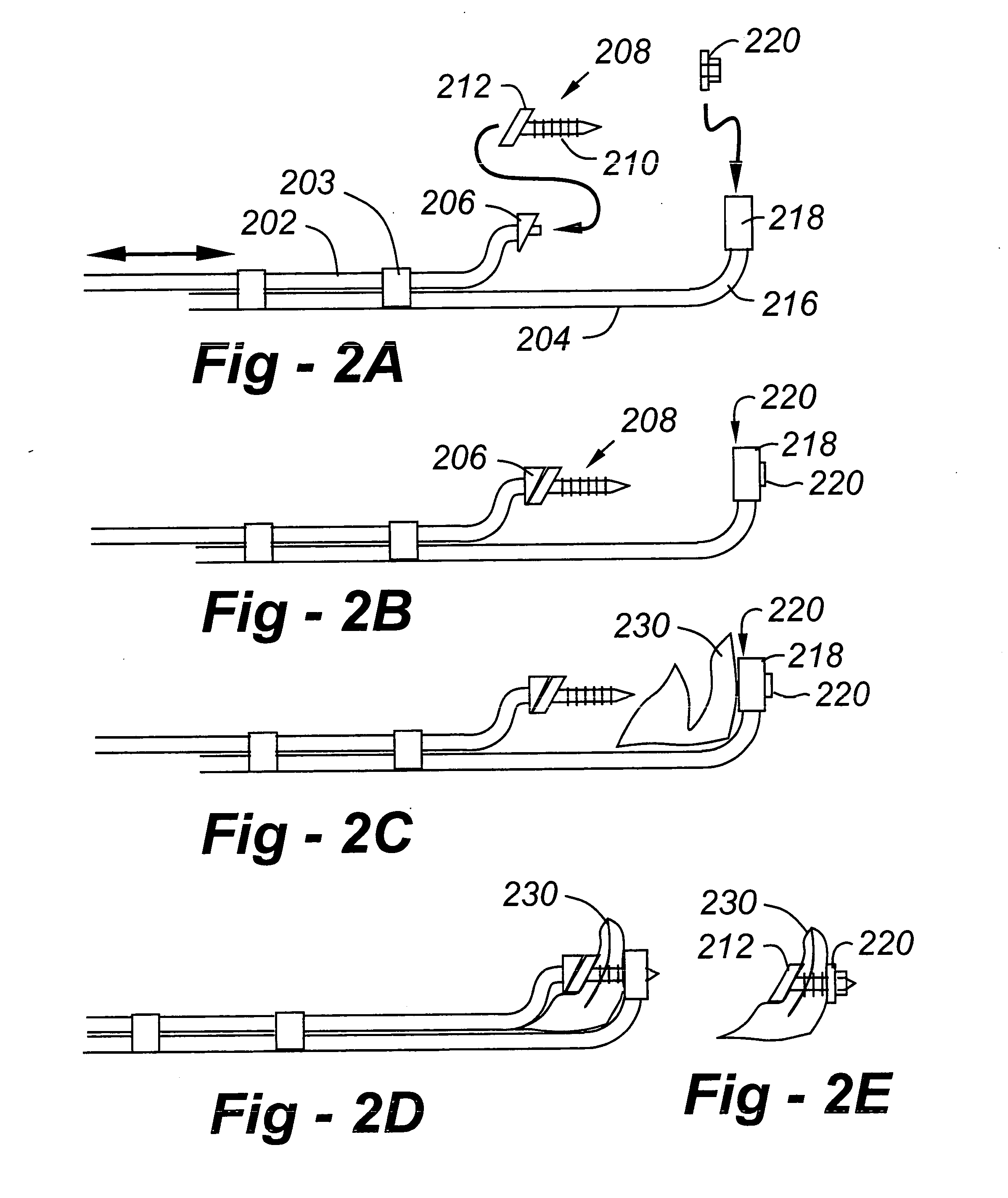Compression tissue repair apparatus and methods
a compression tissue and apparatus technology, applied in the field of compression tissue and minimally invasive surgical procedures, can solve the problems of reducing the elasticity and compatibility of the meniscus, failing with only minimal trauma, and wasting existing techniques
- Summary
- Abstract
- Description
- Claims
- Application Information
AI Technical Summary
Benefits of technology
Problems solved by technology
Method used
Image
Examples
Embodiment Construction
[0031] Turning now to the drawings, and having discussed FIGS. 1A and 1B, FIG. 2A presents a side-view drawing of an instrument according to the invention used for the repair of meniscus tissue. The instrument includes a lower arm 204, bent at 216, and terminating in a holder 218 for the female portion 220 of a fastener according to the invention. An upper arm 202, which is slideable relative to the lower arm 204, is physically configured to provide a holder 206 for the male portion 208 of the fastener. The arms may further include markings to indicate when engagement has occurred.
[0032] In the preferred embodiment, the fastener portions 208, 220, are preferably constructed of a bioabsorbable material, such as polylactic acid. The male portion of the fastener 208 includes a head 212 and a serrated shaft 120 terminating in a pointed end. The serrations may take the form of ribs, barbs, or other types of spaced-apart features. The female portion is washer-like, and includes one or mo...
PUM
 Login to View More
Login to View More Abstract
Description
Claims
Application Information
 Login to View More
Login to View More - R&D
- Intellectual Property
- Life Sciences
- Materials
- Tech Scout
- Unparalleled Data Quality
- Higher Quality Content
- 60% Fewer Hallucinations
Browse by: Latest US Patents, China's latest patents, Technical Efficacy Thesaurus, Application Domain, Technology Topic, Popular Technical Reports.
© 2025 PatSnap. All rights reserved.Legal|Privacy policy|Modern Slavery Act Transparency Statement|Sitemap|About US| Contact US: help@patsnap.com



